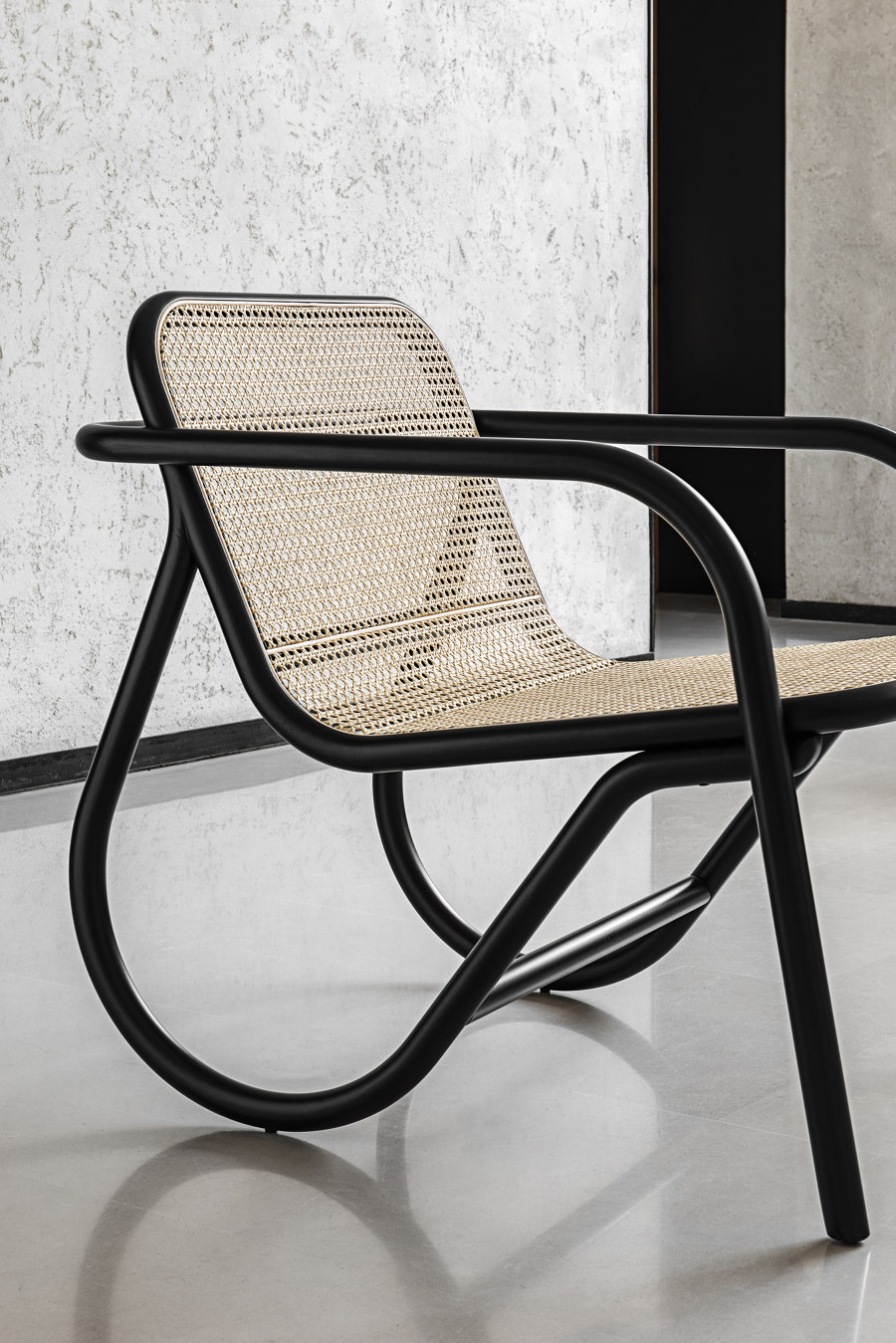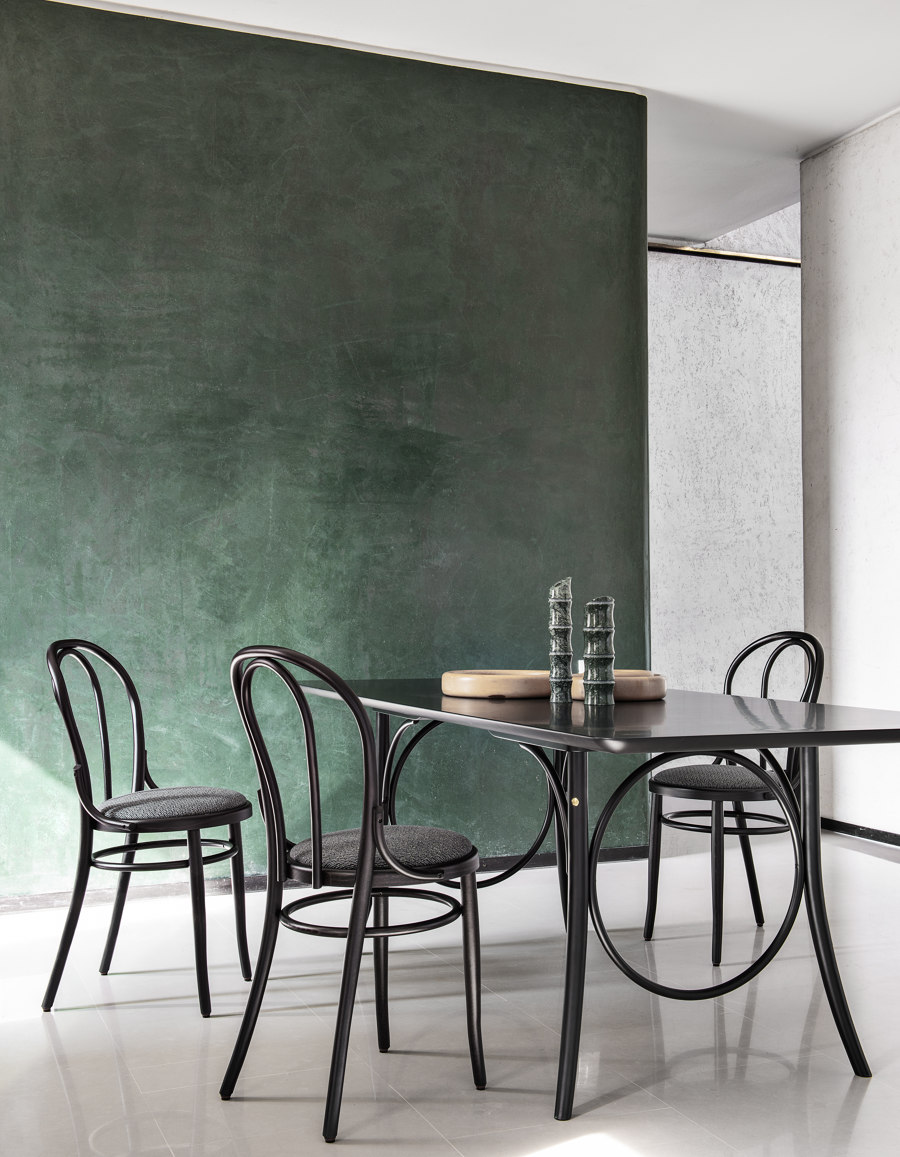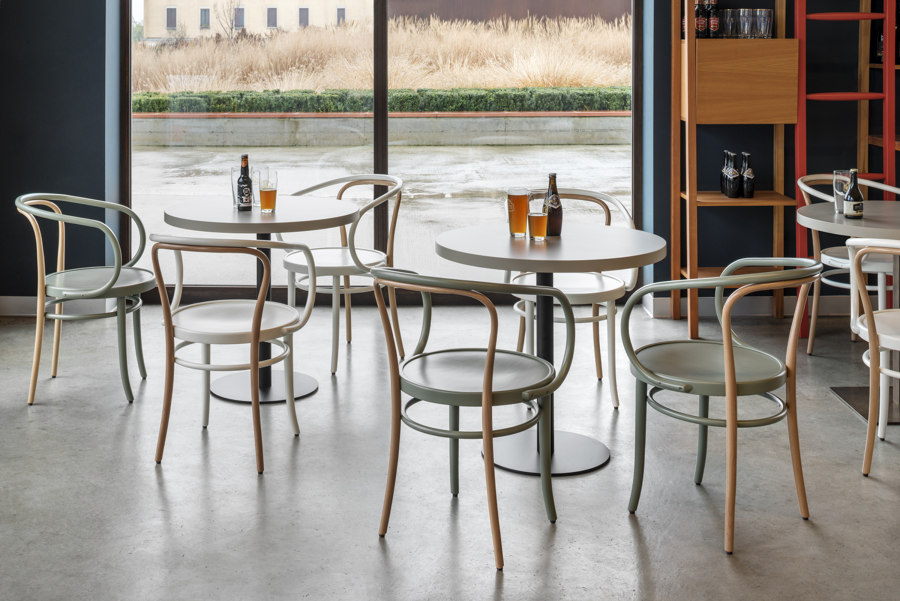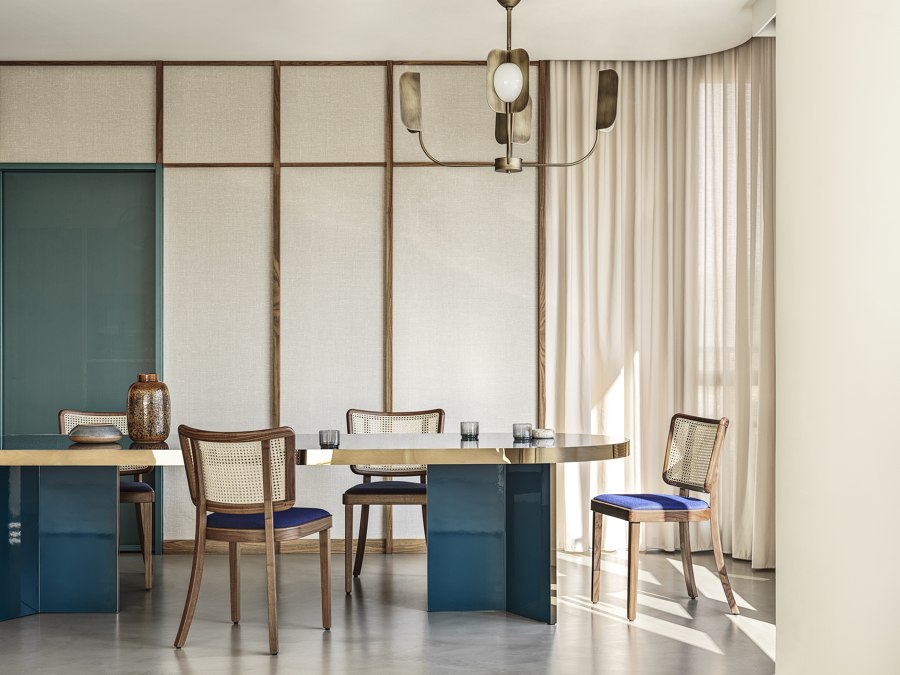A case of the bends: GTV
Brand story by Simon Keane-Cowell
Torino, Italie
01.04.21
A 19th-century design language articulated via 21st-century creative collaborations: Gebrüder Thonet Vienna GmbH's bentwood expertise is defining some of the finest contract spaces the world over.
GTV is always the consummate host: its raft of hospitality projects include Patrick Wu's Rêver restaurant in Guangzhou, where Danish design duo GamFratesi’s upholstered seating, as well the classic Wiener Stuhl and the N. 18 barstool, welcome guests
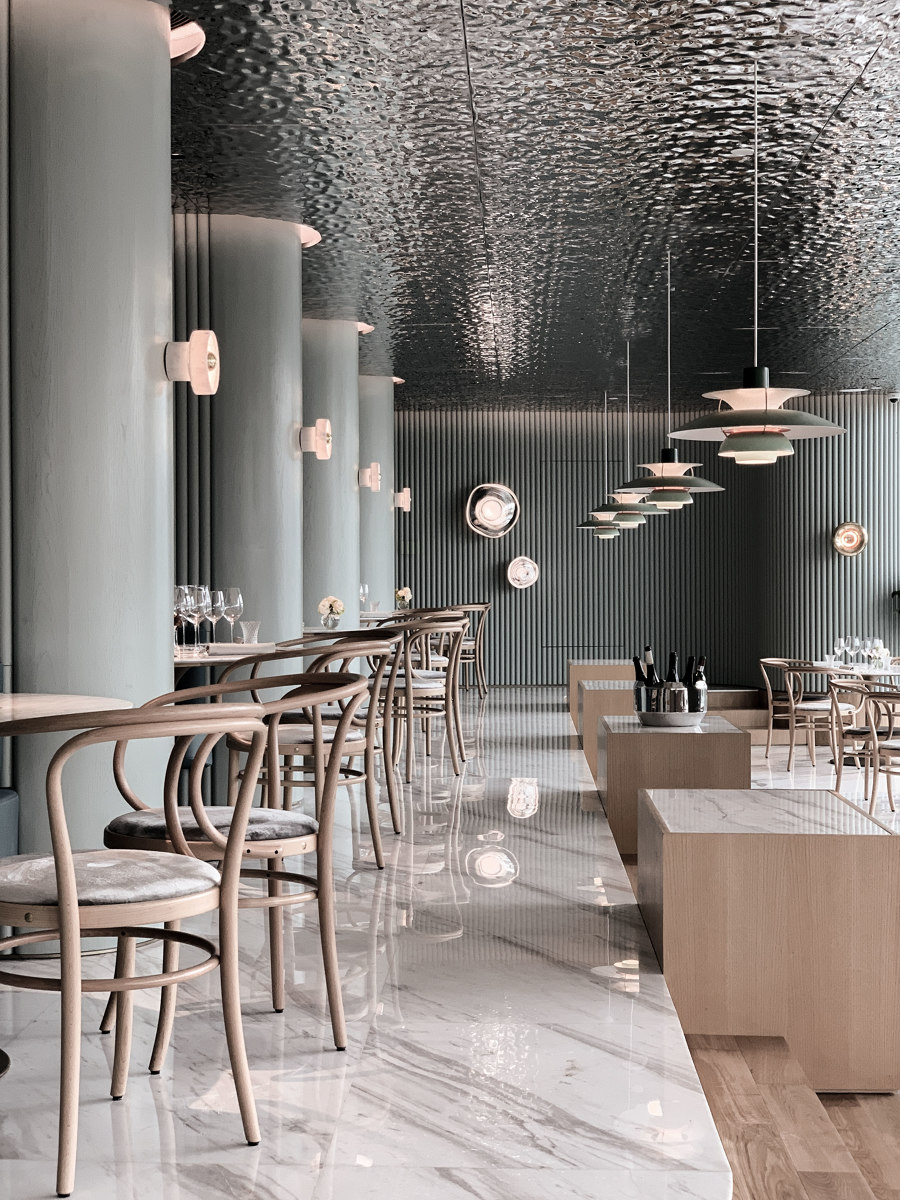
GTV is always the consummate host: its raft of hospitality projects include Patrick Wu's Rêver restaurant in Guangzhou, where Danish design duo GamFratesi’s upholstered seating, as well the classic Wiener Stuhl and the N. 18 barstool, welcome guests
×Visit the Gebrüder Thonet Vienna GmbH website (after you've finished reading this story, of course) and you'll see centre-stage on its homepage the slogan 'Heritage designs the future', accompanied by moving image of expert craftspeople at the long-established furniture manufacturer doing what they do best: steam-bending wood.
What you're looking at is an old technology that's practised with as much precision and pride today as it was when it was introduced in the 19th century, thanks to the commitment by a handful of companies like GTV to keeping alive the specialist skills it requires. But what you're also seeing is the articulation of a design language that's being deployed to create contemporary furniture, relevant to the spaces we live and work in now. Chairs, sofas, tables and other considered pieces, authored by some of the most feted names in architecture and design. This isn’t Latin or Ancient Greek.
Top: 'It's like an exercise in drawing a chair in one go, without lifting your pen from the paper,' says designer Michael Anastassiades, author of the N. 200 armchair. Bottom: Front's Hideout lounge chair and Arch coffee table
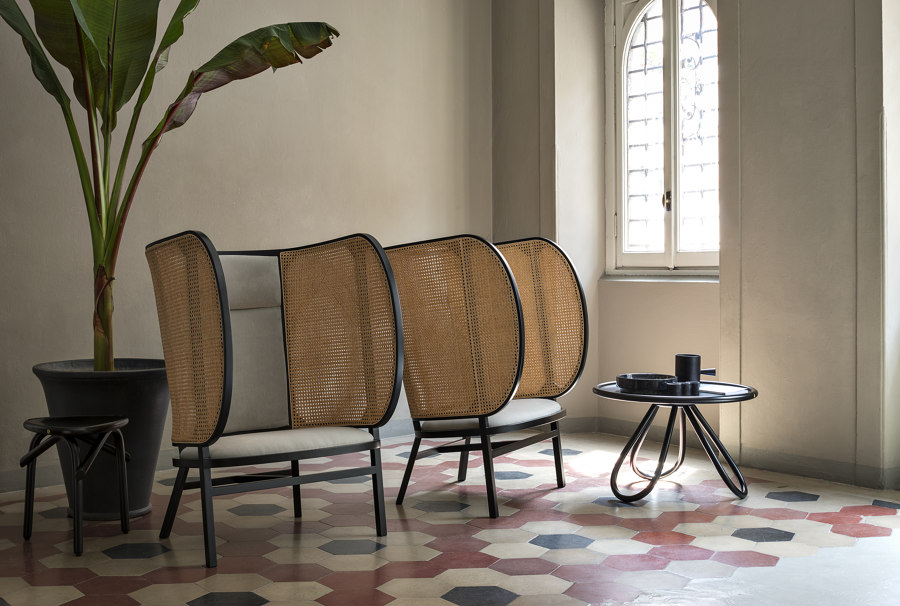
Top: 'It's like an exercise in drawing a chair in one go, without lifting your pen from the paper,' says designer Michael Anastassiades, author of the N. 200 armchair. Bottom: Front's Hideout lounge chair and Arch coffee table
×Bentwood furniture has always had a transcendent, talismanic quality to it. With its rational, almost graphic (yet never cold) emphasis on line, and its development by the legendary Michael Thonet as a means of mass-producing standardised, materially efficient products, it’s little wonder that modernist godfather Le Corbusier chose cane-seated, bentwood armchairs to grace his interiors at the iconic Weissenhof Estate in Stuttgart in 1927, with the Wiener Stuhl, first produced in 1904, a particular favourite of his. Their poetics speak at once of the past and of a time beyond time.
2021 and we find ourselves in a most peculiar situation globally. We’ve all heard and read about the boom in consumer sales of furniture, as we reappraise the design of our homes – now that they’ve become our offices, our gyms, our places of entertainment. Furniture that imparts a sense of heritage, and with its notions of stability and certainty, that functions, beyond its utilitarian and aesthetic performance, as a source of emotional, as well as literal, comfort, is particularly well placed here. Or, as GTV CEO Riccardo Pigati puts it, ‘Having a great classic like the N. 14 chair in our collection – simple, versatile and considered the first true example of industrial design – is a way to travel through time and history while never leaving the room.’
Bentwood shapes space in a range of hospitality settings. From top to bottom: the N. 18 chair and Ring dining table; the Wiener Stuhl and Porto table; and the N. 14 chair and Caryllon dining table
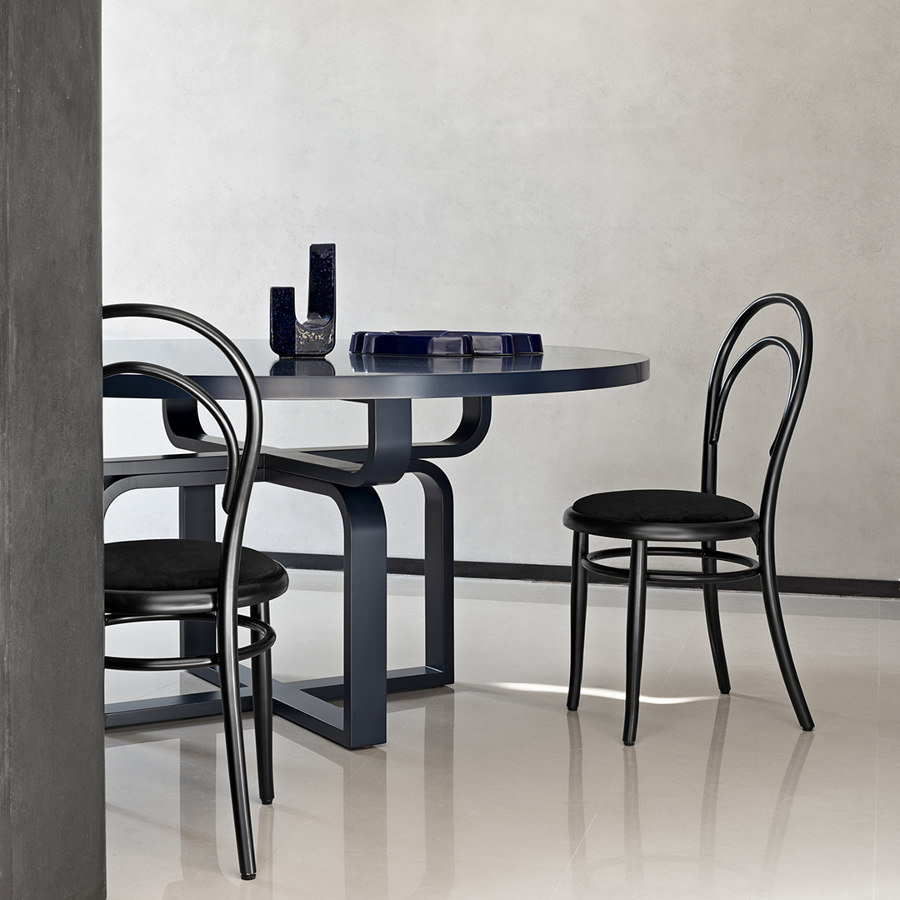
Bentwood shapes space in a range of hospitality settings. From top to bottom: the N. 18 chair and Ring dining table; the Wiener Stuhl and Porto table; and the N. 14 chair and Caryllon dining table
×If you know the design history of bentwood furniture, you’ll know it’s a little complex. When German-born Michael Thonet was invited by the Austrian government in the mid-19th century to patent this steam-bending method, he decamped with his family to Vienna and founded the first Gebrüder Thonet company. Fast forward a century and the various production plants that had been established in the interim in Austria, Germany and the Czech Republic became, in the aftermath of the Second World War, independently operating businesses and brands.
Certainly for GTV, there’s no rivalry here, but rather, true to the spirit of the original family business, they see themselves as part of a wider industrial family that continues to celebrate Michael Thonet’s legacy. The Wiener GTV Design trademark is engraved on a ‘coin’ that’s embedded into the structure of every single piece that leaves its factory; this small detail is very much a big deal, functioning as it does as certification of authenticity, originality and quality, of the perfected union of industrial manufacturing and skilled craftsmanship.
Curves meet cane in GamFratesi's timeless designs for GTV: the MOS console and the Targa sofa and armchair
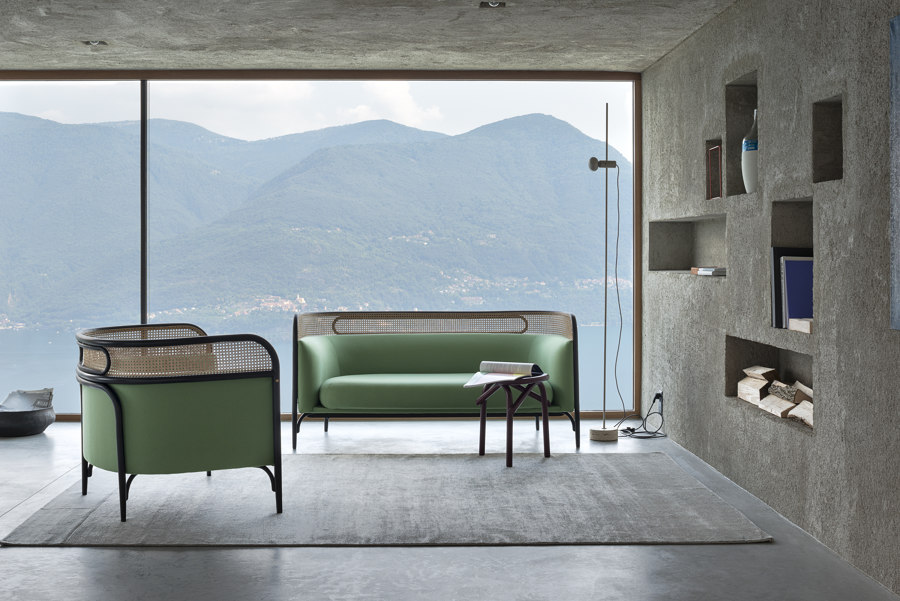
Curves meet cane in GamFratesi's timeless designs for GTV: the MOS console and the Targa sofa and armchair
×In spite of its siblings, however, the company has over time engineered its own specific DNA. It has succeeded in establishing an enviable roster of creative partnerships with the likes of Michele De Lucchi, Front, Philippe Nigro, Nigel Coates, Nendo, Michael Anastassiades, and GamFratesi, which leverage the traditional manufacturing process to innovative effect. Contemporary designs that push back the production limits of steambending, while expanding its formal lexicon. Take its Targa sofa or Hideout armchair, as much at home at home, as it were, as in contract settings. Or its expressive N. 200 chair. Diverse designs that employ the same discourse of woven cane and silhouette-defining bentwood.
Diverse, too, are the array of contract projects globally for which GTV products have been specified. Locations like The Espresso Lab in Dubai, where coffee lovers sit on Josef Hoffmann-designed stools from the iconic 811 collection, and Guangzhou’s Rêver restaurant, created by Shanghai-based architect Patrick Wu, whose sleek, polished interior contrasts with GamFratesi’s upholstered seating, as well the classic Wiener Stuhl and the N. 18 barstool.
Almost 300 GTV chairs, armchairs, sofas and tables grace the panelled and frescoed interiors of the 100-year-old-plus QC Terme San Pellegrino thermal baths near the Italian city of Bergamo, in a dialogue of transcendent elegance
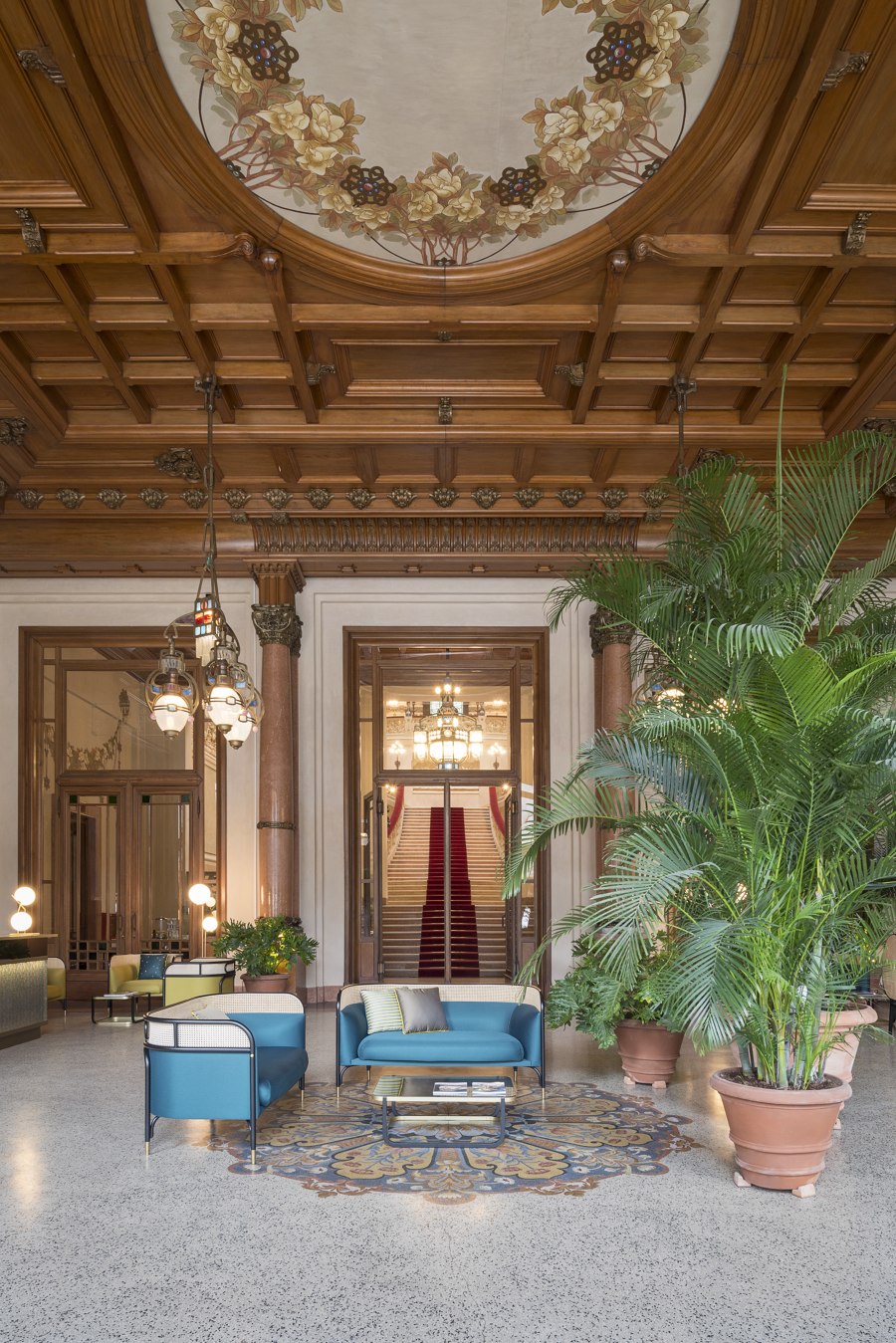
Almost 300 GTV chairs, armchairs, sofas and tables grace the panelled and frescoed interiors of the 100-year-old-plus QC Terme San Pellegrino thermal baths near the Italian city of Bergamo, in a dialogue of transcendent elegance
×Such hospitality projects speak, naturally, to the bentwood-in-bistros tradition, which harks back to the end of the 19th century and Vienna’s Café Museum and Hotel Sacher. But it’s not all about sipping and dining. The 100-year-old-plus QC Terme San Pellegrino thermal baths, for example, a few miles outside the Italian city of Bergamo, are also graced with GTV pieces. Here, the recently restored, wood-panelled and fresco-filled spaces have been staged with a judicious selection of almost 300 of the manufacturer’s chairs, armchairs, sofas and tables.
Like the coins embedded in them, the currency of such timeless furniture never declines in value.
© Architonic


